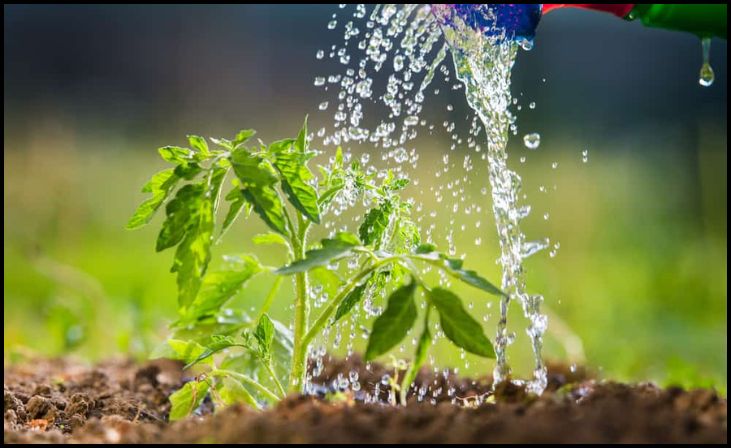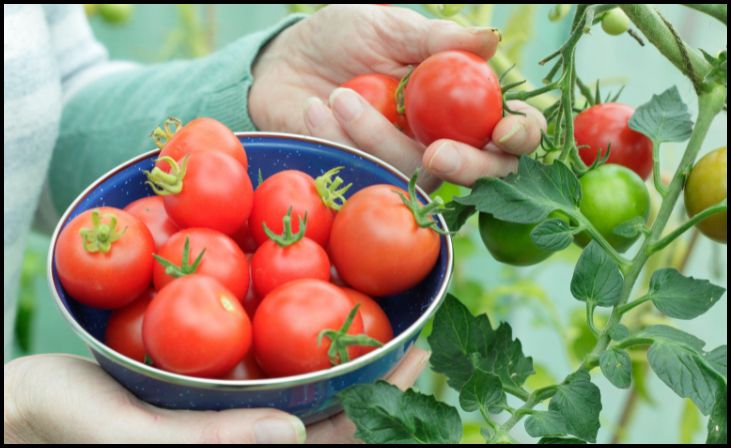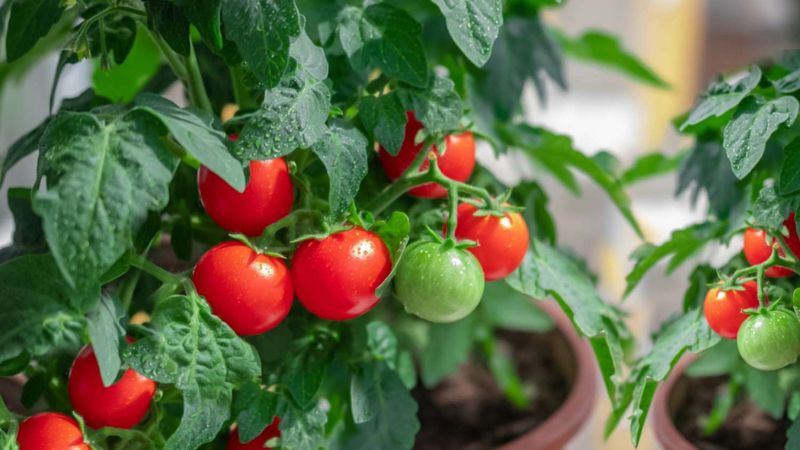Growing tomatoes in containers can be a rewarding experience, offering the convenience of fresh, homegrown produce even in limited spaces. Whether you’re a beginner or a seasoned gardener, these tips will help you achieve healthy and abundant tomato plants in your containers.
1. Choose the Right Container

Select a container that is at least 18 inches in diameter and has drainage holes at the bottom. Opt for containers made of durable materials like plastic or terracotta, ensuring they can withstand the weight of the growing tomato plant.
2. Use Quality Potting Mix
Invest in a high-quality potting mix that is specifically formulated for vegetables or tomatoes. Avoid using garden soil, as it may not provide the necessary nutrients and drainage for container-grown tomatoes.
3. Provide Adequate Sunlight
Tomatoes thrive in full sun, so place your containers in a location where they will receive at least 6-8 hours of direct sunlight daily. If you’re growing tomatoes indoors, consider using grow lights to supplement natural sunlight.
4. Water Consistently

Maintain consistent moisture levels in the soil by watering your tomato plants regularly. Container-grown tomatoes may require more frequent watering, especially during hot weather. Avoid overwatering, as soggy soil can lead to root rot.
5. Support Your Plants
Tomato plants benefit from support to prevent them from sprawling or breaking under the weight of their fruit. Use stakes, cages, or trellises to support your plants as they grow. Install these supports early to avoid disturbing the roots later on.
6. Fertilize Wisely
Apply a balanced fertilizer formulated for tomatoes according to the package instructions. Avoid over-fertilizing, as this can lead to excessive foliage growth at the expense of fruit production. A slow-release fertilizer can provide nutrients gradually over time.
7. Prune for Optimal Growth
Regularly prune your tomato plants to remove suckers (side shoots) that develop in the leaf axils. This promotes better airflow, reduces the risk of disease, and directs the plant’s energy toward fruit production. Use clean pruning shears to avoid spreading diseases.
8. Monitor for Pests and Diseases
Keep an eye out for common tomato pests like aphids, whiteflies, and hornworms. Inspect your plants regularly for signs of damage or disease, such as yellowing leaves, spots, or wilting. Use organic pest control methods whenever possible to minimize chemical exposure.
9. Harvest at the Right Time

Harvest your tomatoes when they reach their mature color and firmness, depending on the variety. Avoid picking them too early or too late, as this can affect flavor and texture. Gently twist or cut the tomatoes from the vine, leaving the stem attached.
By following these tips, you can enjoy a bountiful harvest of delicious tomatoes grown right in your containers. Experiment with different tomato varieties to discover which ones thrive best in your growing conditions and culinary preferences. Happy gardening!
